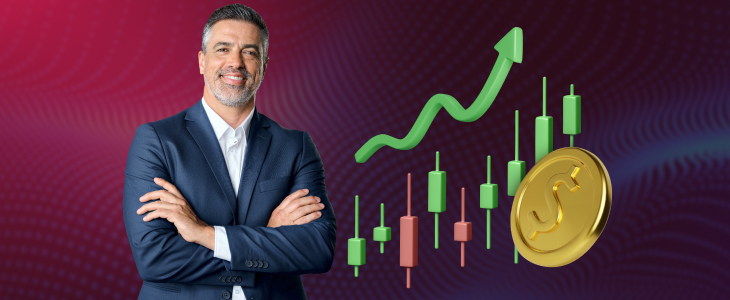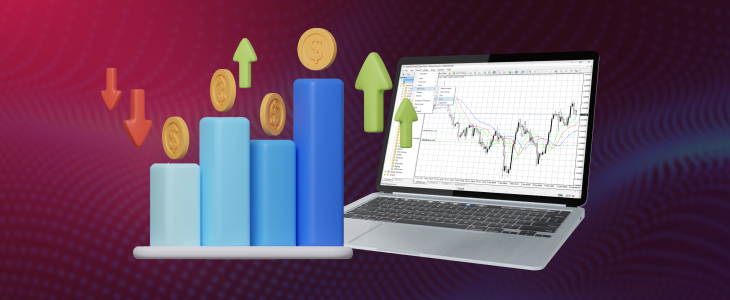The forex market is undoubtedly the largest trading market you will come across in all trading facilities. Furthermore, the FX microstructure refers to the examination of the behavior of the FX instruments. For instance, you can call them a spot and forward. These instruments recreate the crucial trading attributes in the authentic trading platform.
Moreover, the foreign exchange microstructure can also indicate the procedures, participants, and mechanisms. These factors are involved in currency trading and play a crucial role in it. Likewise, it is for those who want to navigate the forex market successfully.
In this article, we will highlight some crucial aspects of foreign exchange microstructure and offer practical strategies for trading.

The Forex Platform Outlook
The FX market is unlike CFD trading and mainly conducts its trading in a segregated manner. For instance, the market is mainly an OTC (Over-The-Counter) platform. Furthermore, this indicates that you can conduct trades directly among parties regardless of a central trade.
Moreover, as you all know the FX market is open all day, five times each week. The market mainly works with various participants like central and commercial banks, corporations, hedge funds, etc. Furthermore, the forex market has different layers, such as:
- Institutional Corporations and Investors: Participants participate in currency exchange for various reasons. For instance, the reasons are suppositions, hedging, and investment.
- Retail Platform: The retail market normally contains minor investors and independent traders. Furthermore, you can mostly conduct your trading volume through online brokers.
- Interbank Platform: Interbank markets are mainly the foundation of the FX market. And this is where bigger banks mostly exchange their currencies. Furthermore, currency determination mainly operates through these Interbank markets.
- Market Builder and Liquidity Distributors: The market participants offer liquidity by providing ask and bid values. And these factors play a crucial role in ensuring the market’s effortless operations.
Order Variations And Implementation
Order executions are one of the primary aspects of FX microstructure. Furthermore, you can notice these instances in platforms such as MetaTrader 4. You can mainly initiate the forex market trades by setting orders with FX brokers.
Moreover, these brokers then implement the orders with the liquidity distributors or market builders.
Also, there are many types of orders in the forex market. You can refer to:
- Limit Orders: Limit orders are mainly trading operations to sell an asset at a particular or better value. Furthermore, limit Orders let you make precise entry and exit points. However, you hardly see them filled in any rapidly paced market.
- Market Orders: You can mainly execute these orders at the best available value in the forex market. For example, the market order advantage ensures certain fillings. However, you can often notice slippage once the trading platform paces speedily.
- Stop Orders: These orders mainly indicate when your asset value reaches a certain level. You can see the stop orders get triggered to secure profits or restrict losses. Furthermore, you can mainly refer to the stop orders to regulate risks in your trading.
As a trader, you can normally interact with the order movements. Furthermore, this scenario indicates that traders place orders to create a supply or demand in the forex market.
Price Innovation And Liquidity
On the FX platform, price innovation indicates the procedures by which you can determine the currency pair. For instance, you can determine the value through the interaction between sellers and buyers. However, following the segregated forex nature, there are no fixed prices. It may differ narrowly on the liquidity distributor, market parts, and region.
Nonetheless, the interbank sets the barometer for prices, and many retail brokers use the values as a support for the offers. Furthermore, the platform’s liquidity plays a major role in determining how conveniently and at the price you can execute a trade.
Nonetheless, the currency pairs that have higher liquidity, for instance, GBP/USD and EUR/USD, generally have less transaction value and tighter spreads. Also, the less liquid pairs experience larger volatility and broader spreads.
Platform Participants And Their Objectives
Many participants in the forex market have different objectives for trading. Furthermore, there are two general participant types you can refer to, such as:
- Hedgers: The hedgers operate on the forex platform to secure themselves against unfavorable currency value drifts. However, Importers and exporters, institutions, and larger corporations normally hedge against currency variation risks.
- Speculators: They are normally traders who look for profits in the price fluctuations. Furthermore, they also implement primary analysis and technical analysis. For instance, these analyses are economic reports, charts, geopolitical occurrences, etc, to foresee price orders.

Part of Market Builders And Brokers
You can refer to the brokers as the negotiators between the forex market and retail traders. The brokers offer access to the FX platform through online trading facilities. Furthermore, these online facilities let you execute your trades properly.
However, the brokers mainly provide leverage that lets you regulate bigger positions than your initial capital. Nonetheless, leverage generally enhances both losses and profits. Furthermore, you can notice the brokers operate in two patterns such as:
- NDD: You can refer to them as No Dealing Desk. And these brokers offer you an instant approach to liquidity distributors regardless of the opposite trading sides. Furthermore, NDD sometimes leads to translucent pricing and fewer disputes of interest.
- DD: The DD model suggests the term Dealing Desk, where a broker operates like a market maker. For instance, this model puts bid and ask values and substantial exchanges through their directory. Moreover, this suggests that the broker remains in the reverse position of the consumer’s exchange.
Volatility And Platform Movement
You are mainly familiar with the forex market because of its volatile nature. Furthermore, it can highlight both benefits and risks for traders. However, you can also notice several factors that drive volatility, for example:
- Central Bank Guidelines: The central banks often fluctuate the interest rates and other commercial regulations to maintain price stability. For instance, you can notice that the U.S. Federal Reserve sometimes alters the USD pair in the international platform.
- International Occurrences: Many factors can impact the forex prices. For instance, these factors are political uncertainty, wars, elections, etc.
- Economic Announcement: Economic announcements like GDP, interest rates, and inflation can affect currency price movements.
- Market Sentiment: A trader’s market sentiment plays a significant role in the forex prices. For instance, if there is any upcoming market uncertainty in the direction, it can impact the market movement.
สรุป
Throughout this article, we have described several things regarding forex microstructure and what factors drive it. Furthermore, the platform’s microstructure refers to the twisted and sinuous ground that encloses the devices behind the occurrence of currency trading.
Moreover, if you recognize and learn the major aspects of forex microstructure, you can navigate your trading more efficiently.
Are you troubled with your trading activities? Let us represent the FXcess platform, where you can address most of your trading queries. With several features that we have, from suitable trading assets alongside commodities and stocks to affordable brokers, it will conclude your trading operation in no time. So, it is highly recommended that you try out this platform.
FAQs
1. How do you define market microstructure in forex?
– The Forex microstructure mainly suggests the internal functions and the trading movements in the Forex market.
2. What is the forex trading structure?
– In the forex market, you mainly trade currency pairs that normally consist of a quote and a base currency.
3. How do you define the forex market geometry?
– The market geometry in forex defines several procedures you apply in technical inspections to identify patterns, price movements, trading volumes, etc.
4. Is the FX market random?
– Although the FX platform is not random but it sometimes shows repetitive patterns for technical analysis.
การปฏิเสธความรับผิด
ข้อมูลนี้ไม่ถือเป็นคำแนะนำในการลงทุนหรือคำแนะนำในการลงทุน หากแต่เป็นการสื่อสารทางการตลาด
